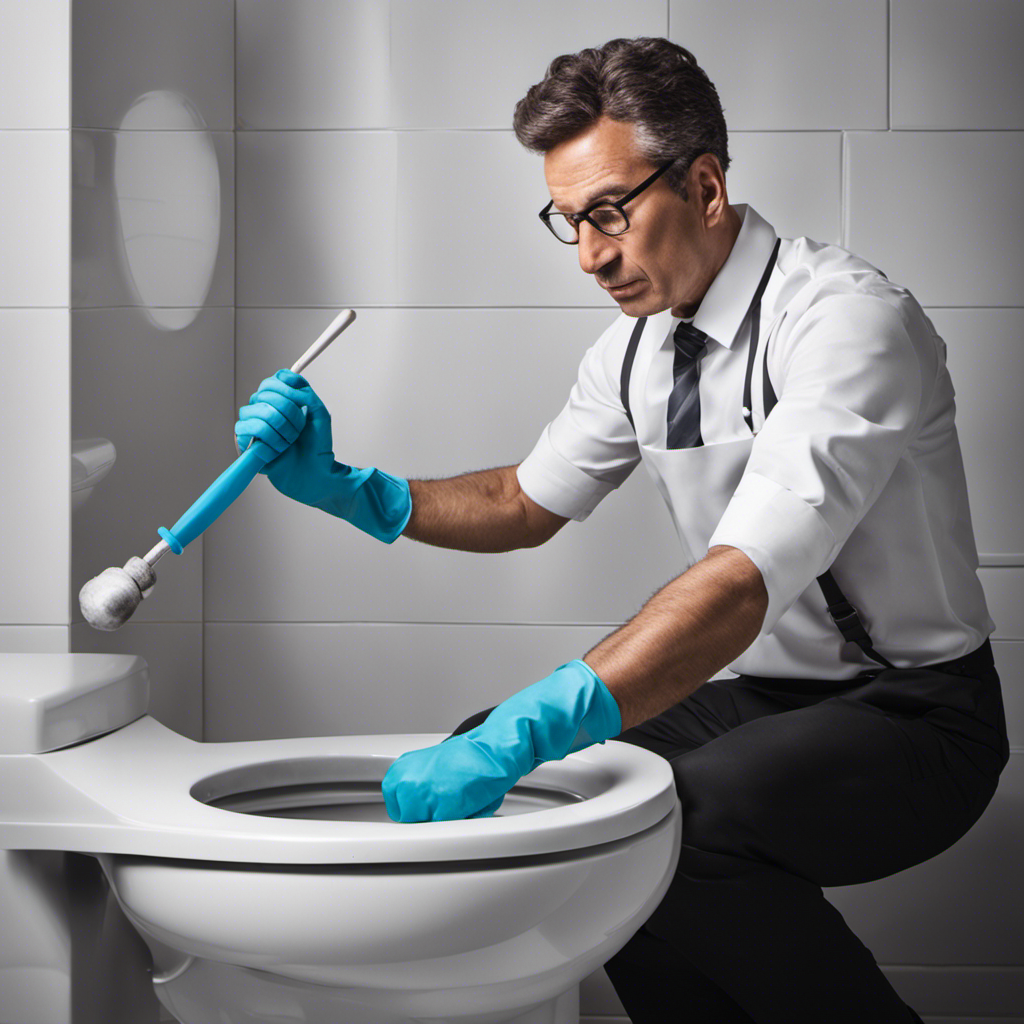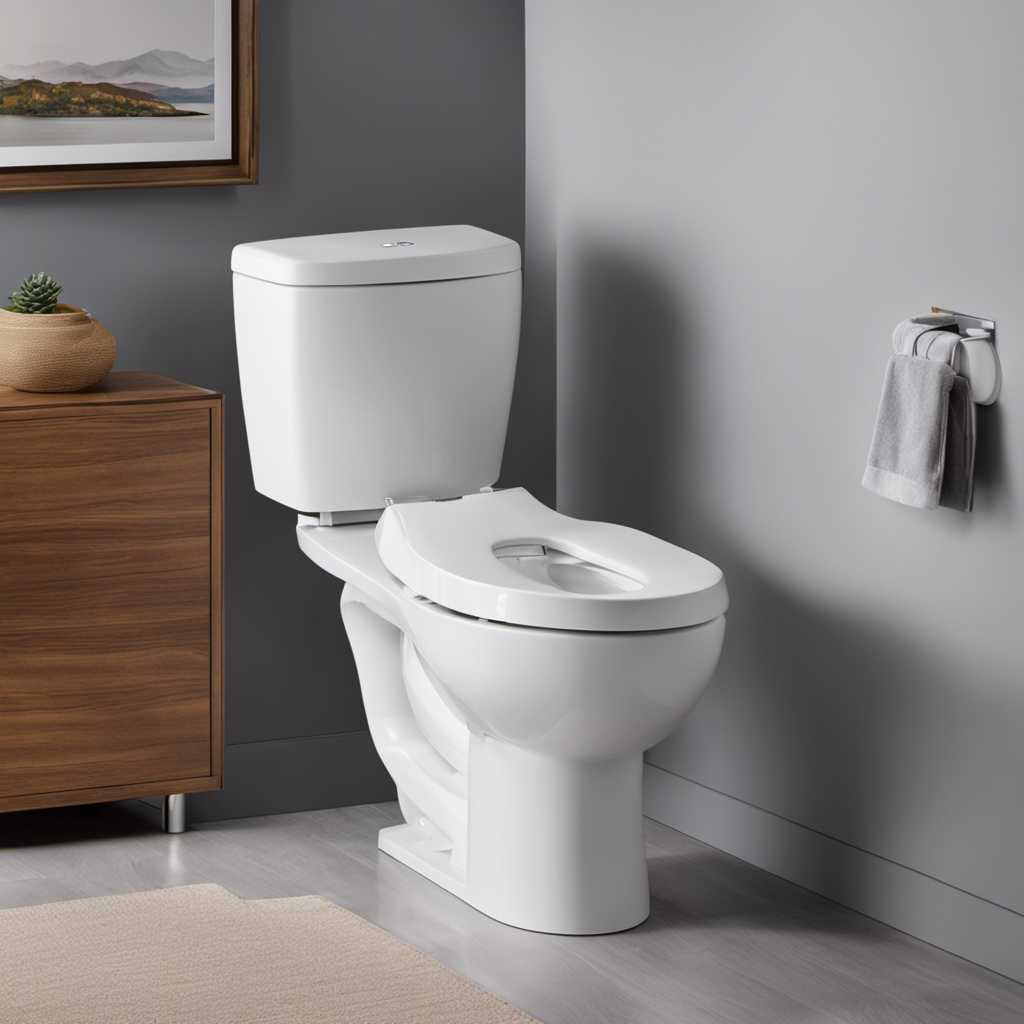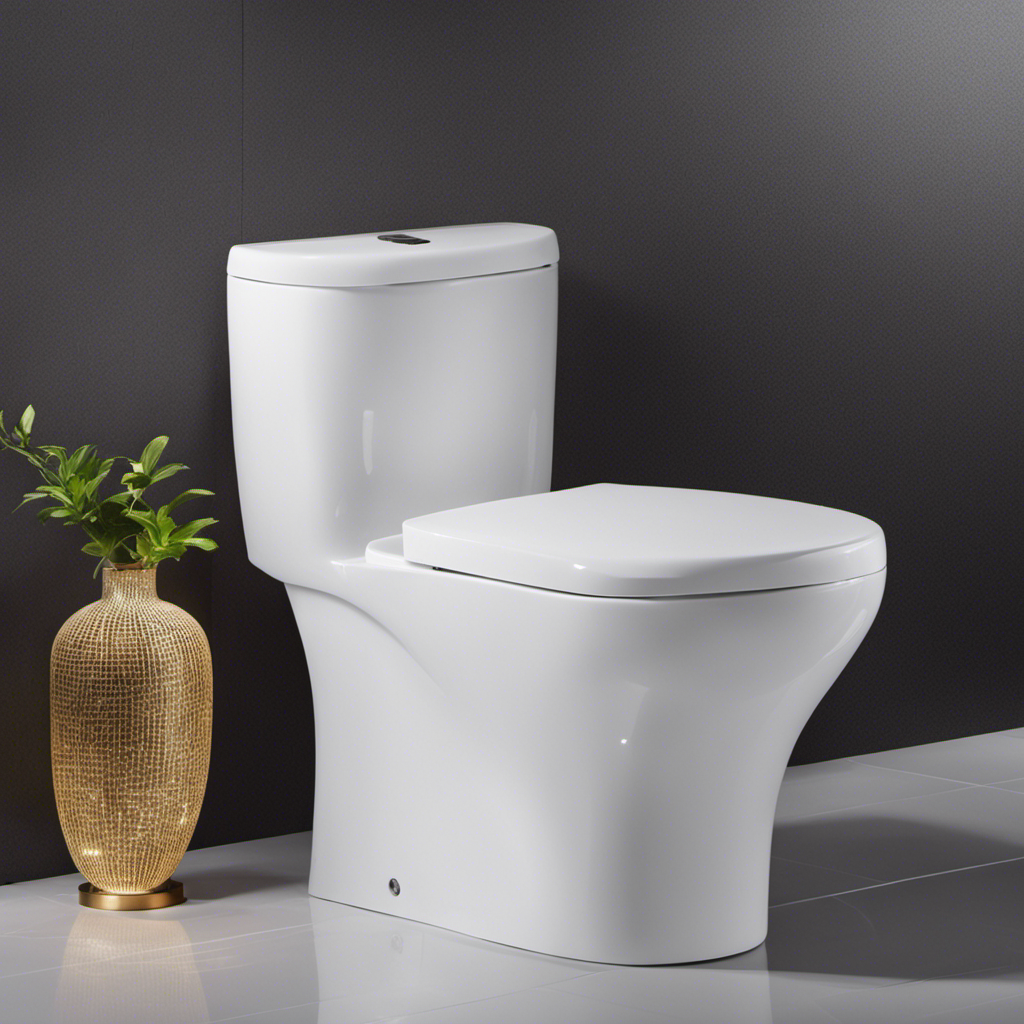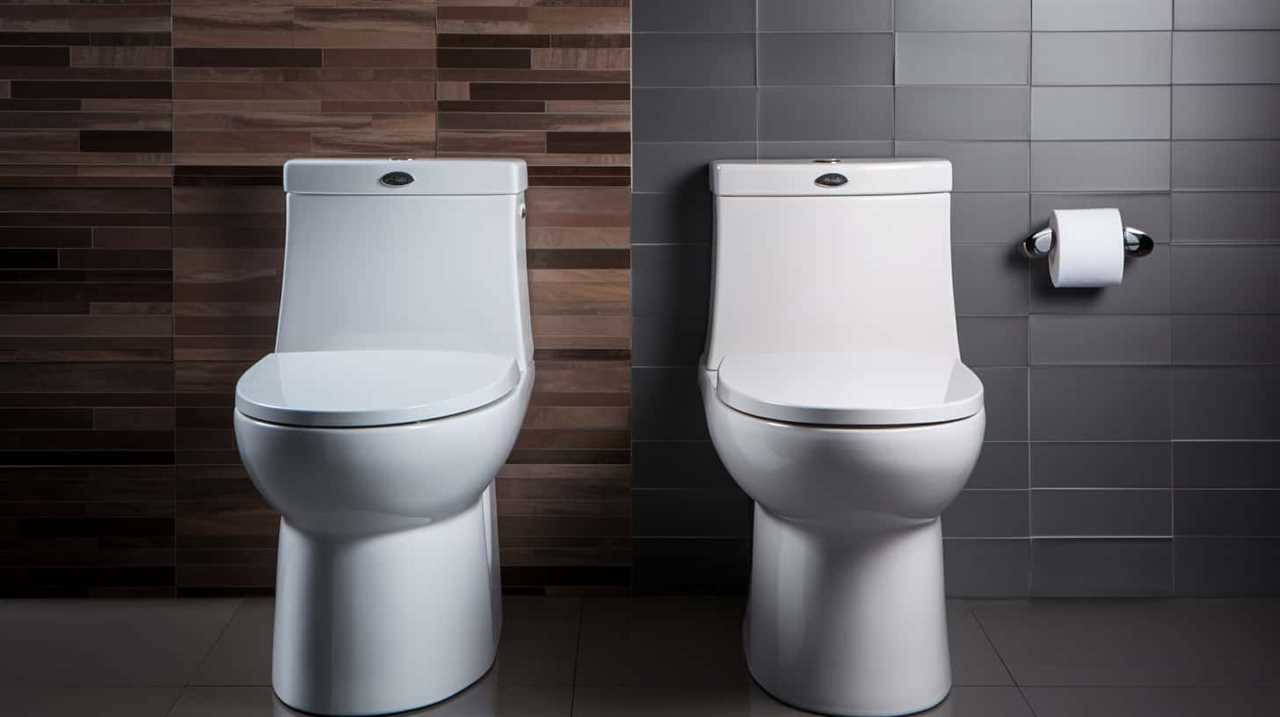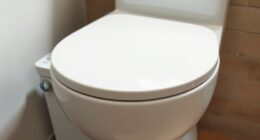I’ve been there – standing in the bathroom, staring at a clogged toilet, wondering how to fix it. It’s a frustrating experience, but fear not!
I’m here to guide you through the process of unstopping a toilet, step-by-step. With a few tools and a little know-how, you’ll be able to tackle this common household problem like a pro.
So, roll up your sleeves and let’s get to work!
Key Takeaways
- Flushing non-flushable items can cause toilet clogs, so it’s important to educate household members about what can and cannot be flushed.
- Regularly inspecting the toilet tank and bowl, fixing leaks and cracks promptly, and using preventive measures can help prevent future clogs.
- Plungers are effective tools for unclogging toilets, but they require regular maintenance and proper technique to be effective.
- If alternative methods like using a mixture of baking soda and vinegar don’t work, or if there are complex plumbing issues or safety concerns, it’s best to call a professional plumber for help.
Common Causes of Toilet Clogs
One of the most common causes of toilet clogs is the flushing of non-flushable items. It’s important to remember that toilets are designed to handle only human waste and toilet paper.
Flushing items such as sanitary napkins, paper towels, or baby wipes can easily lead to clogs. These items do not break down like toilet paper and can get stuck in the pipes, causing blockages.
To prevent future clogs, it is crucial to educate everyone in your household about what can and cannot be flushed down the toilet. Place clear signs in the bathroom reminding them to only flush toilet paper.
Additionally, keep a small wastebasket in the bathroom for non-flushable items. By following these steps, you can greatly reduce the likelihood of experiencing toilet clogs in the future.
Tools and Supplies You’ll Need
When it comes to unclogging a toilet, understanding the effectiveness and techniques of using a plunger is essential.
I will discuss the proper way to use a plunger to maximize its effectiveness in clearing the clog.
Additionally, I will explore alternative methods that can be used to unclog a toilet, such as using a toilet auger or a mixture of baking soda and vinegar.
Plunger Effectiveness and Techniques
Using a plunger is an effective way to unclog a toilet. Plungers are a common tool used for toilet maintenance and troubleshooting.
To ensure the plunger is in good working condition, regular maintenance is necessary. This includes cleaning the rubber suction cup and inspecting the handle for any cracks or damages. If the plunger is not providing enough suction, it may be due to air leaks or a weak seal.
Troubleshooting this issue involves checking for any cracks or tears in the rubber cup, adjusting the seal, or replacing the plunger altogether. By properly maintaining and troubleshooting your plunger, you can ensure its effectiveness in unclogging your toilet.
If you find that the plunger is not solving the problem, there are alternative unclogging methods that can be explored.
Alternative Unclogging Methods
If the plunger doesn’t work, you can try using a mixture of baking soda and vinegar to unclog the toilet. This chemical reaction can help break down any blockages and clear the pipes. Here’s a step-by-step guide:
- Measure out 1 cup of baking soda and pour it directly into the toilet bowl.
- Slowly pour 2 cups of vinegar into the bowl, being careful not to overflow.
- Let the mixture sit for about 30 minutes to allow the chemical reaction to take place.
- After 30 minutes, flush the toilet to see if the clog has cleared.
Using chemical solutions like baking soda and vinegar can be a natural and effective way to unclog a toilet. However, it’s important to note that these remedies may not work for severe blockages.
In the next section, we will discuss safety precautions to take when unclogging a toilet.
Safety Precautions When Unclogging
To ensure your safety, it’s important to follow certain precautions while unclogging a toilet. Here are some safety tips to prevent toilet accidents:
| Safety Precautions | Description |
|---|---|
| Wear protective gloves | Protect your hands from bacteria and germs by wearing disposable gloves. |
| Use a plunger correctly | Make sure to create a tight seal around the drain and apply gentle, consistent pressure while plunging. Avoid using excessive force to prevent splashing. |
| Avoid using chemicals | Chemical-based unclogging products can be hazardous to your health and may damage your plumbing. Stick to natural methods or seek professional help. |
| Be cautious with tools | If using a toilet auger or snake, handle it carefully to avoid injury. Follow the manufacturer’s instructions and never force the tool into the drain. |
| Maintain good ventilation | Open a window or use a fan to ensure proper air circulation and prevent the buildup of unpleasant odors or harmful gases. |
Step-by-Step Guide to Plunging a Toilet
When it comes to unclogging a toilet, knowing effective plunging techniques is crucial.
In this discussion, I will guide you through the step-by-step process of plunging a toilet like a pro.
Additionally, I will provide tips on how to prevent future clogs, ensuring a smoothly running bathroom.
Effective Plunging Techniques
First, make sure you have a firm seal with the plunger before you start plunging. This is crucial for effective plunging and preventing any mess.
To help you understand the importance of proper plunging techniques, here are three reasons why it is essential to maintain your toilet and perform DIY plumbing:
-
Prevents costly repairs: Regular maintenance and DIY plumbing can help you identify and fix minor issues before they become major problems, saving you money on expensive repairs.
-
Promotes hygiene and cleanliness: By keeping your toilet in good condition, you ensure a clean and sanitary environment for yourself and your family.
-
Increases lifespan of your toilet: Proper maintenance and DIY plumbing help extend the lifespan of your toilet, saving you money in the long run.
Preventing Future Clogs
Regular maintenance and DIY plumbing can help prevent future clogs by keeping your toilet in good condition and ensuring proper functioning. By following a few simple steps, you can maintain your toilet and avoid the hassle of dealing with clogs in the future.
First, make sure you are using proper flushing techniques. Avoid flushing large amounts of toilet paper or foreign objects down the toilet.
Additionally, regularly inspect the toilet tank and bowl for any signs of leaks or cracks. Fixing these issues promptly can prevent water damage and potential clogs.
Lastly, consider using a toilet auger or snake to clear any minor obstructions before they become major clogs. Taking these preventive measures will help keep your toilet running smoothly and minimize the need for unclogging.
Now, let’s explore alternative methods for unclogging a toilet.
Alternative Methods for Unclogging a Toilet
If you’re looking for other ways to unclog a toilet, you could try using a plunger or a toilet auger. However, there are also alternative methods that you can try if these options don’t work.
Here are three DIY toilet unclogging methods that you can consider:
-
Dish Soap and Hot Water: Pour a generous amount of dish soap into the toilet bowl, followed by hot water. Let it sit for a few minutes to soften the clog, and then flush the toilet.
-
Baking Soda and Vinegar: Sprinkle baking soda into the toilet bowl, and then pour vinegar on top. The chemical reaction will help break down the clog. Let it sit for a while, and then flush the toilet.
-
Wire Hanger: Straighten out a wire hanger and create a small hook at one end. Insert the hanger into the toilet drain and try to dislodge the clog by gently maneuvering it.
Preventing Future Toilet Clogs
Now that you’ve successfully unclogged your toilet using alternative methods, it’s important to take steps to prevent future clogs. Proper toilet maintenance can go a long way in keeping your plumbing running smoothly. Here are some DIY plumbing tips to help you avoid future toilet clogs:
-
Use less toilet paper: Excessive amounts of toilet paper can easily clog your toilet. Be mindful of the amount you use and consider using less.
-
Avoid flushing non-flushable items: It’s crucial to remember that toilets are designed to handle only human waste and toilet paper. Avoid flushing items like wipes, tissues, or feminine hygiene products.
-
Regularly clean your toilet: Build-up of minerals and debris can contribute to clogs. Regularly cleaning your toilet, including the rim, bowl, and jets, can help prevent blockages.
-
Install a toilet auger: A toilet auger is a useful tool for removing stubborn clogs. Keep one handy and use it whenever necessary.
When to Call a Professional Plumber
When it comes to dealing with stubborn clogs or complex plumbing issues, it’s best to call a professional plumber. While there are some minor clogs that can be easily fixed with a plunger or a drain cleaner, there are certain signs that indicate a serious clog that requires professional help.
Here are three signs that it’s time to call in the experts:
-
Multiple fixtures are clogged: If you notice that more than one fixture in your home is experiencing drainage problems, such as a slow-draining sink and a backed-up toilet, it could be a sign of a larger issue in your plumbing system.
-
Persistent clogs: If you’ve tried DIY methods to unclog your drains, but the problem keeps coming back, it’s a clear indication that there’s a deeper issue that needs professional attention.
-
Strange smells or gurgling noises: Foul odors or gurgling sounds coming from your drains can indicate a serious clog or even a sewer line problem. It’s crucial to call a professional plumber to assess and fix the issue before it worsens.
Conclusion
So there you have it, a step-by-step guide on how to unstop a toilet. It may not be the most glamorous task, but it’s a necessary one that can save you time and money.
Remember, the average person flushes the toilet about 2,500 times a year. That’s a lot of potential for clogs!
By following these simple steps and taking preventive measures, you can keep your toilet running smoothly and avoid the hassle of a clog.
Happy plunging!
